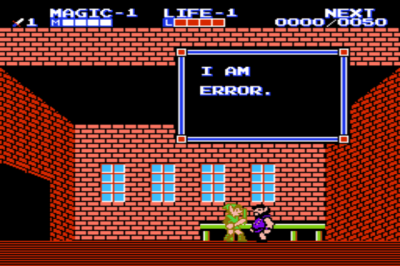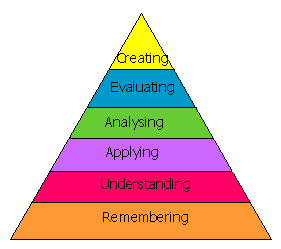First we must look at the steps or the mental process of trial and error as it applies to any video game. Whether you do it consciously or unconsciously, I'm confident that we all go through a similar process of attempts, analyzing, changing, and retrying. So I've cleaned up the process and put it into a simple list.

- 1) Do I have the basic skills or the capacity to succeed?
- 2) How did I lose? What went wrong?
- If I don't know, how can I prepare myself or play so that I can be more aware of how I lose?
- 3) How can I avoid/counter how I lost?
- If I can't figure it out, what new things can I try?
- If I'm out of ideas, what are my assumptions about how the system works? Do I need to test or adjust any of them?
- If I can't figure it out, what new things can I try?
- 4) Do I need a new technique to be successful?
- If so, do I need to practice this new technique?
- 5) Is my new strategy complete enough for my goals?
- 6) What kind of attempt/experiment should I try next?
The first question in trial and error process is a big one. Though all MM10 boss battles can be played with just 4 buttons (left/right, A, B), don't underestimate the skill it takes to play. Mega Man is difficult for a reason. So let's look the skill spectrum.
Dexterity
- Speed: Rapidly shooting the M. Buster. The advanced technique; real time power canceling.
- Harmony: JUMPing and SHOOTing independently using just your thumb.
- LTM: Developing complete strategies. Memorizing any and every complexity in the game.
- STM: Required for tactical gameplay and the first step to developing LTM.
- Analyze: A critical step in the learning/trial and error process.
- Tier 1: Tactical gameplay.
- Tier 2: Developing LTM strategies (taking data (reflex), factor your input limitations (dexterity), and use the data (knowledge) to form a strategy)
- Tier 3: Adjusting strategies because of decaying resources and stamina.
- Reflex: fast enemies, moving projectiles, enemy mixups/tells.
- Stimulus/Response Curve: Reacting to the different tells of a mixup.
- DVA: Tracking all moving objects in the game.
- Peripheral Vision: Tracking all moving objects in the game.
- Eye Movement: Quickly focusing on Mega Man, enemies, bosses, attacks, the relative spacing of these elements, and the health bar(s).
- Static: Bullet Speed. Mega Man movement speed. Boss/enemy armor.
- Complex: Homing attacks, JUMPing and SHOOTing (especially hitting moving targets from increasing distances).
- Internal: Boss/enemy armor.
- External: Avoiding or interacting with any moving object.
- Accel/Decel: Moving and SHOOTing any armored target while increasing or decreasing the horizontal distant to the target.
- Tracks: Adjusting the timing of an accel/decel timing challenge requires one to hold on to the timing of their SHOOTing while separately being cognizant of the timing of successful enemy hits.
With these skills, you'll have everything you need to perfectly play Mega Man 10. With that said, Mega Man 10 is a solvable game. This means there's a 100% damage free complete strategy you can develop and use so that you'll never have to guess (as long as you have the skills). This also means you can learn how to become flawless, which will come in handy when going for the "Mr. Perfect" achievement/challenge. So far all all of my experience with MM10 has confirmed its solvable quality. However, since I haven't played a perfect run yet, I can't say for sure. This realization brings us to the next topic.
Assumptions. We make assumptions all the time to help us learn about a video game. Instead of completely stabbing in the dark through trial and error, we internalize patterns and make assumptions about a game's design. Some assumptions are true. We all had a good feeling that there has never been a Coin in the Mario platformers that you must die in order to collect or a coin. There's never been a coin placed that you can grab too. As it turns out, this is an actual design trend that Miyamoto and Nintendo were very conscious of. Donkey Kong Country's bananas are very similar. In Zelda, you can never get stuck in a boss battle because you run out of arrows or any other kind of ammo. Likewise, I assume that Mega Man 9 and 10 are solvable games. Making such assumptions is great because it can steer us into looking for a solution in the right places or encourage us to conduct specific experiments. As great as assuming correctly is, false assumptions can really waste our time. More on that later.
Everything beyond step 1 stresses multiple facets of knowledge skills. Not that the DKART system necessarily needs any subcategories for its subcategories, but we can use Bloom's Taxonomy of Learning Domains (specifically the cognitive domain) to helps us better understand the process of using analyzation knowledge skills.

The new sub-subcategories are defined as the following (from this site). Each are distinct levels that must be masted before moving on to the next.
- 1. Remembering: Retrieving, recognizing, and recalling relevant knowledge from long-term memory.
- 2. Understanding: Constructing meaning from oral, written, and graphic messages through interpreting, exemplifying, classifying, summarizing, inferring, comparing, and explaining.
- 3. Applying: Carrying out or using a procedure through executing, or implementing.
- 4. Analyzing: Breaking material into constituent parts, determining how the parts relate to one another and to an overall structure or purpose through differentiating, organizing, and attributing.
- 5. Evaluating: Making judgments based on criteria and standards through checking and critiquing.
- 6. Creating: Putting elements together to form a coherent or functional whole; reorganizing elements into a new pattern or structure through generating, planning, or producing.
To really help everything sink in, in part 3 I'll present a video showing various examples of MM10's skill spectrum and the process I went through developing complete strategies for 10 Mega Man 10 bosses on the hardest difficulty. Should be quite empowering.